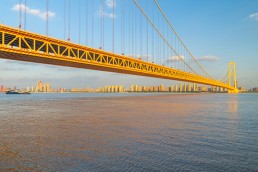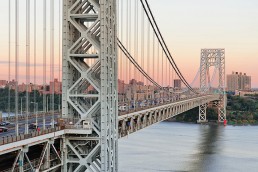© Bildagentur Zoonar GmbHForth Rail Bridge 1890
Forth Rail Bridge 1890
© Michael Drummond
Forth Rail Bridge
The first major structure in the UK to be constructed of steel
Key Facts
Rail bridge
UNESCO World Heritage Site
Category ‘A’ Listed Building
Location
Edinburgh, Scotland
Across the Firth of Forth
Linking Edinburgh with Fife and North-east Scotland
Designers / Engineers
Sir John Fowler
Sir Benjamin Baker
Description
Cantilever truss bridge
2 x 521m main spans
2,467m total length
Main contractors
Sir Thomas Tancred
T. H. Falkiner
Joseph Philips
Sir William Arrol & Co.
Construction
Began 1883
Opened 4 March 1890
The Bridge
Before the construction of the bridge, the only alternative route between Edinburgh and Fife involved the ferry at Queensferry. The construction of a rail bridge began in 1882 and when it opened it had the longest single cantilever bridge span in the world, as well as the first major structure in Britain to be constructed of steel. At the height of its construction, more than 4,000 men were employed, using 55,000 tonnes of steel, 140,000 cubic metres of masonry and 6.5million rivets. Load testing of the completed bridge was carried out using two trains each consisting of three heavy locomotives and 50 wagons loaded with coal, totalling 1,880 tonnes, this represented more than twice the design load of the bridge. The deflection under load was as expected. The construction of the bridge resulted in an unbroken East Coast railway route from London to Aberdeen reducing journey time from 13hours to 10½ hours.
On 5 July 2015, UNESCO inscribed the bridge as a World Heritage Site, recognising it as “an extraordinary and impressive milestone in bridge design and construction.
In 2016 it was voted Scotland’s greatest man-made wonder.































































